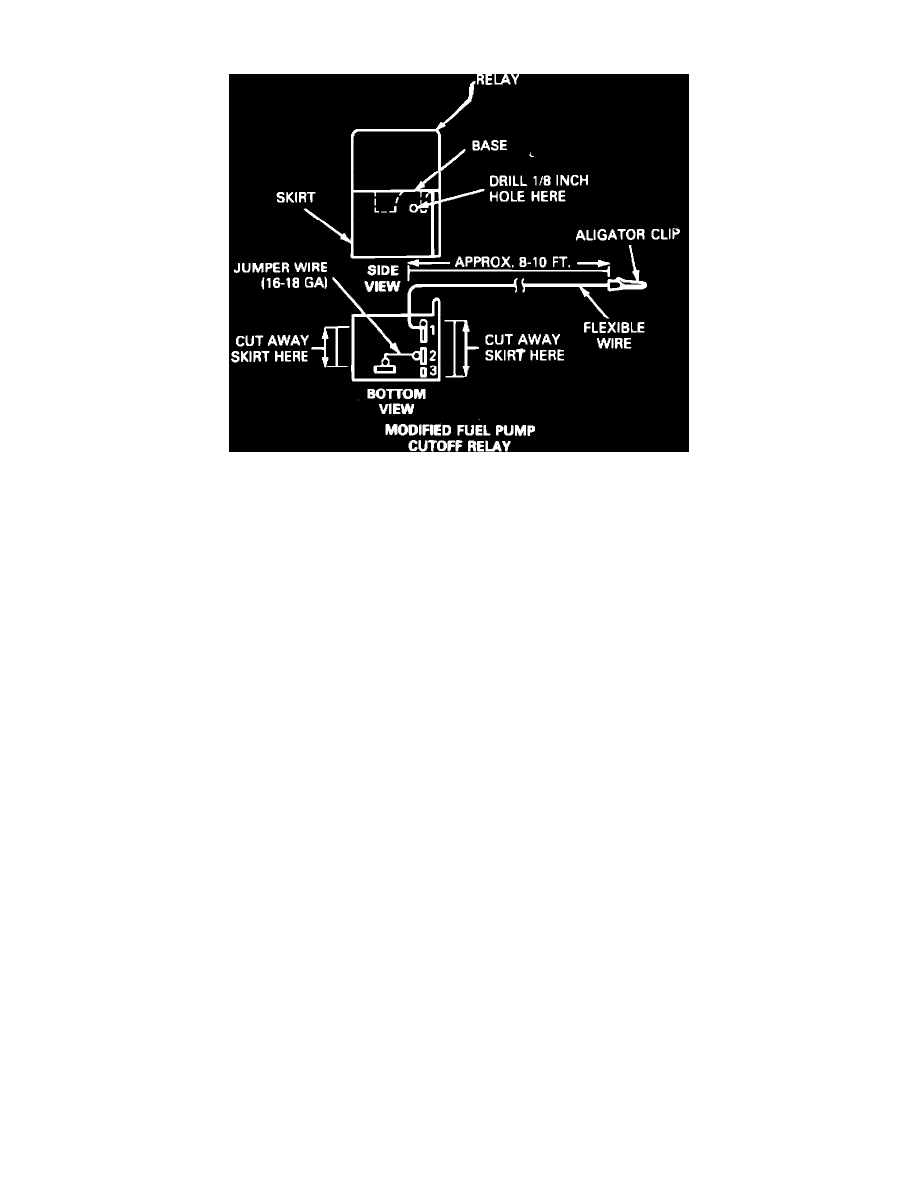Bronco Full Size V8-302 5.0L (1986)

Fuel Pressure: Testing and Inspection
Fig. 13 Modified fuel pump cut-off relay
HIGH PRESSURE PUMP
If the pump is suspected of being inoperative, check for the following:
1.
Check for adequate fuel supply.
2.
Inspect all lines and fittings for leakage.
3.
Check for electrical continuity to pump as follows:
a. Disconnect electrical connector at fuel pump, then connect a suitable volt-ohmmeter across the body connector.
b. With ignition key in the off position, measure resistance. If resistance is 5 Ohms or less, proceed to step 3c. If not, connect lead of
volt-ohmmeter to ground lead of body wiring harness and check for continuity to ground. If no continuity, repair wiring or body ground and
repeat step 3b. Attach volt-ohmmeter to pink/black wire of body connector and check continuity to ground. If not OK, it will be necessary to
check the wiring at the pump sender. If wiring checks OK, check continuity across pump terminals. If not OK, replace pump sender assembly.
c. Set volt-ohmmeter to read voltage and turn ignition key to the on position. Voltage should rise to 12 volts and then return to zero. If voltage is
not within specification, check electrical circuit and repair as necessary.
d. Attach volt-ohmmeter to pump harness leads and check continuity across the leads. If OK, proceed to step 4. If not OK, check at pump
terminals. If not OK at pump terminals, replace pump.
4.
Check fuel pump pressure and flow as follows:
a. Raise and support vehicle, then attach pressure tool T80L-9974-A or equivalent, to the fuel diagnostic valve. In the event vehicle does not
have a fuel diagnostic valve, make a gauge according to the provided instructions and attach gauge between fuel rail and pump outlet or filter.
Before working on fuel system, it will be necessary to relieve system pressure.
b. Turn ignition key to on position and check pressure gauge reading. The gauge should read about 30 - 40 psi if the pump is operating properly
and other system components are OK.
c. Disconnect fuel return line at fuel rail.
d. Connect a hose from the fuel rail fitting, into a suitable container.
e. Locate and replace fuel pump relay with the modified relay, Fig. 13. Take ground lead to a convenient location and ground it. Run fuel pump
for about 10 seconds.
f.
Allow fuel to drain from return hose into a container and observe the volume.
g. The pump is operating properly when fuel pressure reaches 35 - 45 psi; fuel flow is a minimum of 5.6 ounces in ten seconds and fuel pressure
remains a minimum of 30 psi immediately after de-energization.
h. If all three conditions are met, the fuel pump is operating normally. Check for engine and electrical problems.
i.
If fuel pressure meets specification but fuel flow does not, check for restrictions in filters, supply lines and/or tank selector valve. After
correcting any restrictions, check system specifications by repeating above tests. If fuel flow is not up to specification, replace pump.
j.
If fuel flow and fuel pressure meet specification but system will not stay pressurized after pumps are turned off, check for leakage in injectors
or regulator. If they both check OK, replace fuel pump.
k. If no fuel flow or fuel pressure is observed, the fuel system should be checked as in step i. If system checks out OK, replace the fuel pump.
LOW PRESSURE PUMP
1.
Open fuel line at the high pressure pump inlet.
